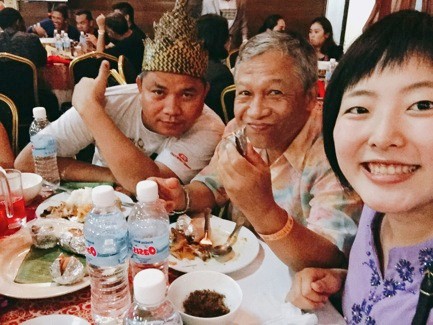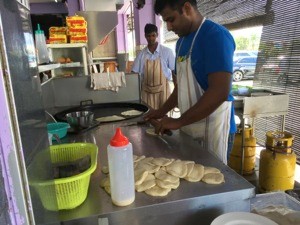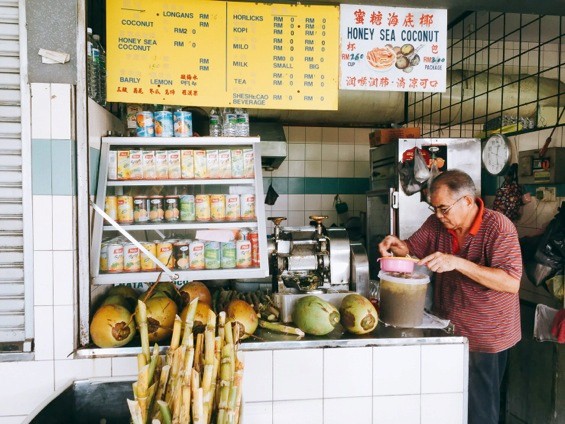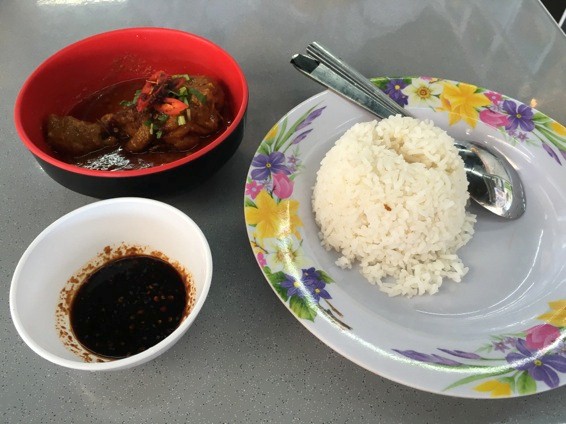I am a 21-year-old Japanese student visiting Sarawak, Malaysia, for the first time in my life. A beautiful state filled with optimistic/respectful residents and full of nature. I have spent half of my life in the U.S. and never experienced life in Asia outside of my home country, Japan. Even though Malaysia and Japan are in the same region, the experiences are very different within the two countries, which makes it crucial for first timers visiting the country. However, growing accustomed to the life in Malaysia, I have encountered many wonderful people that are making my stay in Malaysia a wonderful experience. Here are some of the tips I have for foreigners coming to Malaysia for the first time.
Tip 1: One way of greeting in Sarawak/Malaysia is “Sudah Makan?”
In Malaysia, the most common/popular way of residents greeting each other is by asking “Sudah Makan?”. At first, I thought this meant, “How are you?”, or something similar to that. Finding out what it meant, I was surprised because greeting someone by asking them if they have eaten was really unusual for me. However, after a while, I started noticing that in Malaysia, food culture is a key of communication and is one of the main reasons why people in Malaysia have the ability to become friends with each other in an instant.
Tip 2: More than 3 meals per day?!
Throughout my life, breakfast, lunch and dinner has been the main meal in a day. However, in Malaysia, it is not unusual for a person to eat around 5 meals per day including brunch and teatime. In my opinion, the reason for this is that the food courts and café are open from morning until midnight for people to enjoy the gourmets being served. Also, with the proportions being served per plate being small in quantity, it is likely for one to eat more than the 3 main meals.
Tip 3: Enjoying the System and Food
One thing I enjoy and respect about Malaysia is that the word “trust” can be seen anywhere and everybody being laid back about everything. Some food courts have systems that foreigners will never understand, where you take the food without the price being on display. In this case, you pay the cashier and the cashier will name a price (usually being cheaper than expected). Other times, you end up paying for the food you ate after you’ve already ate the meal. In this case, you have to inform the cashier what food you ate even though you have an empty plate in your hands. When I went through this experience, I was very shocked by the way the cashier trusted me with the payment. With a smile on my face, I left the food court with respect towards the culture.

Tip 4: Take out
In Malaysia, take-outs are available for any kind of food on display. One of the take out menus that might seem rare for a Japanese intern like me was the Laksa. Whenever you’re ordering take-outs for noodles, they tend to separate the noodle and the soup in two different bags. What was surprising for me was that bags for take-outs were more common than cups. Who knew bags were actually more convenient and stable than using cups!
Tip 5: Food Courts
When walking in the streets of Kuching, you tend to encounter food courts/Café at every block. The way you order food over here was extraordinary that it felt like I was a kid going out on his first shopping trip by himself.
Here’s what happened at the food court on my first trip…I stood by the buffet counter not knowing how to order so I observed the other customers and noticed that everything was self-service. The only problem was that I had no idea of the food that was on display so I ended up getting the same thing that the customer in front of me was getting resulting in a plate filled with mystery and concern. When I was about to reach for my wallet, the customer before me left without paying and sat down on the table. I didn’t know what to do so I stood at the spot looking like a lost child for about five minutes. Thankfully, one of the locals was able to speak English and told me to pay at the table.
For me, this was so unusual that this experience became one of the most memorable experiences during my visit in Malaysia.
So…for the first timers coming from Japan or any other country, I advise you to search up how the system works beforehand when visiting a food court. Otherwise, English is another option since most of the residents can communicate with the language, but there are some food courts where Malay or Chinese is being used.
Tip 6: Until your body gets used to the food/spices, don’t be too adventurous despite the curiosity.
When visiting other countries with different food culture, we are filled with curiosity and try out things we don’t have in our country. I mean, you only live once so why not right? Being born in Japan and spending half of my life in America, I thought I could eat anything without being sick. However, in my case, this was my downfall. My first week being here, I was so hyped up about the cheap meals that I probably ate everything that my body desired. Honestly, I was satisfied and had no regrets about the meals, until a huge stomachache hit me so hard which lasted me about two weeks. After some searching, I learned that some of the spices and ingredients here need some getting used to for a foreigner’s digestive system.
With this experience, my advice is to be careful with what you put in your mouth. Its good to be adventurous because it usually leads to finding delicious gourmets of Sarawak, however, supplements and medicine can become your best friend when doing so.

僕は日本の大学に在学中の21歳で、マレーシアのサラワク州にインターン生として滞在しています!サラワク州は自然に囲まれていて、現地のみなさんもとても温かい人たちばかりです。11年間をアメリカで過ごし、日本以外のアジア地域で生活するのが初めてなので、こちらの生活はチャレンジと新しい発見の毎日です!このブログでは、食についてのカルチャーショックや気づきを書かしてもらいます!
毎日職場に着くと、スタッフとの会話には「Sudah Makan?」と聞かれます。マレー語が苦手な僕は、着いた当初は、「元気ですか?」のような意味合いをもつ挨拶だと思っていました。後から調べてみるとこれは、「ご飯食べた?」という意味だと言う事がわかりました。日本やアメリカではこのような挨拶の仕方などなくびっくりしました。だけど、他民族が住むマレーシアでは食がコミュニケーションの中心だということもあり、このような気遣いだけでも会話が広がり、友情が生まれることがあります!
僕の中では一日3食が当たり前でした!だけど、マレーシアでは一日に5食程度食べる人も珍しくありません。例えば、朝食と昼食の間や昼食の後に、間食をすることもあります。屋台やカフェが朝から夜まで開いていて、家族や友人と楽しく食事することができます!多様な食文化が存在する国なのもあり、少しずつ色々な食事を楽しめるのも魅力のひとつです!
マレーシアのフードコートでは様々な楽しみ方があります!フードコートは、人と人の信頼関係を築く場所でもあるからです。写真を見たらわかるように、マレーシアのフードコートには値段などが表示されていることが少ないです。最初はこのようなシステムに驚きましたが、マレーシアではこれが普通です。たまには、自分が食事した後、自己申告で食べたものを伝えるという場合もあります。お店側とお客さんの信頼関係があるからこそ成り立つシステムで好感をもてました。
マレーシアでは屋台やフードコートに展示されている食べ物はすべてお持ち帰りが可能です!ここで驚いたのが、麺類やカレーなどのお持ち帰りの仕方です。普段スープ系のものをお持ち帰りする際、カップなどに入れて持ち帰るのが普通だと思っていたのですが、マレーシアでは袋の中に入れます!カップにスープ類を入れるとよく蓋の部分から漏れることがあるのですが袋の方がこぼれにくくて驚きました!
僕が住んでいるクチンではフードコートや屋台がすごく多いです。クチンに着いた当初はお腹が空いていてもオーダーの仕方がわからず、まるで、「はじめてのおつかい」に出ている子供のようでした!
初めて行ったフードコートではどうすればいいのか分からず、とりあえず僕の前に並んでいたお客さんを見ていたらセルフサービスということに気づき、とりあえず列に並んでみました。
しかし、並べられているおかずが何かわからずここでも前のお客さんの真似をしてみると、お皿の上は見た事のない料理でいっぱい!
この後お会計をして食事かな?と思いきや僕の目の前のお客さんは、そのまま食事をはじめました。財布をもったまま迷子のように立ち尽くしていると、英語を話せる店員さんが「テーブルで払うんだよ」と教えてくれ、そのまま空いている席につきました。しかし、いくらまってもお会計が来ず食事に手をつけずにまっていると現地の人が「食事がおわってから払うのよ」と教えてくれやっと食事にありつけることができました。
マレーシアのフードコートは日本のシステムと違うため、すこしマレー語がわかっていると便利だと思います。
海外にいき、新しい文化に触れる時には好奇心と新しいものへの興味に溢れていますよね?マレーシアに着いた最初の週、僕はリーズナブルな食事に浮かれて、食べたいものを次々に食べていきました。アメリカでの移住経験をもつ僕にとって、こちらの食事も身体にあうはずだろうと考えていました。しかし、この甘い考え方のせいで翌日僕は腹痛に悩まされることになりました。マレーシアの食事はどれもおいしく満足できるものですが、外国人の私たちの身体が現地のスパイスや材料に慣れるには、すこし時間がかかるようです。
サラワクの料理はどれも美味しく魅力的なものばかりで挑戦したいものばかりですが、中には日本人の身体には合わないスパイスなども含まれているため、旅行中の胃薬は念のために持ち歩くのが懸命でしょう!
Written by: Kenta Kojima